Introduction
Benefits of Having a Bamboo Garden are numerous, making it a tranquil and sustainable addition to any landscape. Bamboo offers a unique blend of natural beauty and environmental advantages. Renowned for its rapid growth and versatility, it introduces an exotic, calming aesthetic inspired by Zen and Japanese garden styles, creating a serene atmosphere. Beyond its visual appeal, bamboo is eco-friendly, helping to reduce carbon dioxide levels while providing a sustainable source of oxygen. Whether used as a privacy screen, decorative border, or the focal point of a larger landscape, a bamboo garden enhances both the ecological health and visual charm of any outdoor space.
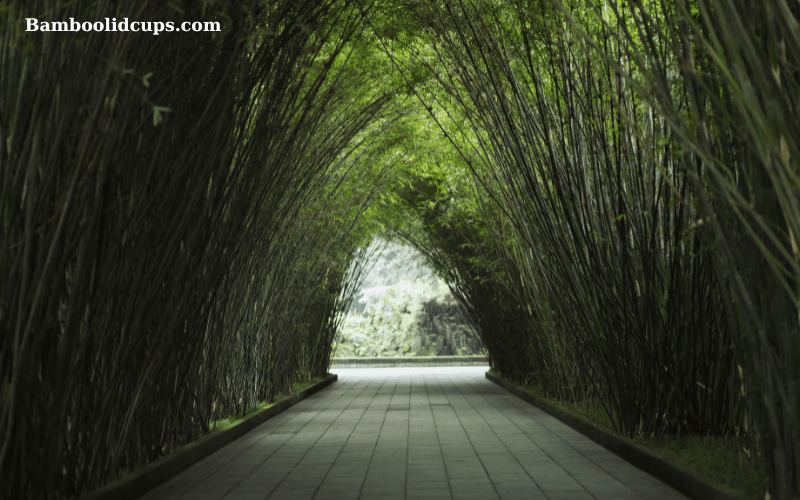
Why choose Bamboo Garden?
Choosing a bamboo garden offers numerous advantages, making it a valuable addition to any outdoor space. First, bamboo brings a distinctive aesthetic appeal, with its elegant stems and lush green foliage adding a natural, calming beauty that complements various garden styles. Secondly, bamboo is highly beneficial for the environment; it grows quickly, absorbs substantial amounts of carbon dioxide, and releases oxygen, contributing to cleaner, fresher air. Finally, bamboo is incredibly versatile and sustainable, as it can be harvested and repurposed into a wide range of household products, from furniture and decor to kitchenware. With its blend of beauty, eco-friendliness, and practical applications, a bamboo garden is an ideal choice for those looking to enhance their living environment in multiple ways.
Bamboo types
In bamboo gardens across the U.S., several types of bamboo are particularly popular for their unique characteristics and adaptability to various climates. Moso bamboo, Phyllostachys bamboo, Black bamboo, Bambusa bamboo, Fargesia bamboo, Chusquea bamboo. Additionally, various smaller decorative bamboo species, including dwarf and ornamental types, are ideal for colder regions or container gardening, offering flexibility in garden design. Each of these bamboo varieties brings unique beauty and adaptability, making them suitable for diverse climates across the U.S.
Moso bamboo
Moso bamboo is a giant species known for its height, rapid growth, and dense structure, making it ideal for landscaping and furniture production. It thrives in warm, subtropical areas like Florida, Georgia, and parts of Texas, but can also adapt to milder climates on the West Coast. For optimal growth, plant Moso bamboo in well-draining soil with plenty of sunlight and water it regularly, especially during dry periods. Applying organic mulch helps retain moisture and provides essential nutrients, supporting its healthy, vigorous growth.
Phyllostachys bamboo
Phyllostachys bamboo, with its tall, slender stalks, is a popular choice for landscaping and privacy screens. Adaptable to various climates, it grows well in moderate to cooler U.S. regions like the Pacific Northwest, Midwest, and Northeast. Varieties like Golden and Yellow Groove Bamboo tolerate cold and occasional frost, making them suitable for seasonal climates. Plant in well-draining soil with partial to full sunlight and keep the soil consistently moist, especially during dry periods. To control its vigorous growth, use a root barrier or container. With the right care, Phyllostachys bamboo brings beauty and structure to gardens in diverse U.S. areas.
Black bamboo
Black bamboo, known for its striking dark stems, is a popular choice for adding unique visual appeal to gardens. It thrives in mild, temperate climates like California, the Pacific Northwest, and parts of the Midwest where winters are mild. Although it tolerates cooler temperatures, Black bamboo grows best with moderate warmth and humidity. For optimal care, plant it in rich, well-draining soil with partial sunlight, or full sun if temperatures aren’t too hot. Regular watering is key, and adding mulch helps retain moisture. Black bamboo grows moderately and is less invasive, making it easier to manage—a stunning, lasting addition to U.S. gardens.
Bambusa bamboo
Bambusa bamboo, known for its thick, lush clumps and tropical appearance, is a popular choice for warm, humid climates. This bamboo variety thrives in regions like Florida, southern Texas, and other parts of the Southeast U.S. where winters are mild and temperatures stay above freezing. Bambusa bamboo prefers full sunlight and rich, well-draining soil, making it ideal for creating natural privacy screens or decorative garden accents. Regular watering is essential, especially in dry periods, and applying organic mulch around the base helps retain moisture and protect roots. Unlike more invasive types, Bambusa bamboo grows in dense clumps, making it easy to manage. With proper care, it brings a vibrant, tropical feel to landscapes and gardens across warmer U.S. regions.
Fargesia bamboo
Fargesia bamboo, known for its delicate, arching stems and dense clumping growth, is a favorite for cooler climates and shaded gardens. This bamboo variety thrives in regions like the Pacific Northwest, Northeast, and mountainous areas of the U.S., where temperatures are cooler, and humidity levels are moderate to high. Fargesia bamboo prefers partial shade and moist, well-draining soil, making it ideal for understory planting or creating natural privacy screens. Unlike more aggressive bamboo types, Fargesia grows slowly and forms non-invasive clumps, making it easy to control. With regular watering, especially during dry spells, and some mulch to retain moisture, Fargesia bamboo adds a graceful, lush look to landscapes in cooler U.S. regions.
In addition to larger species, smaller and ornamental bamboos—such as dwarf bamboo, Buddha Belly bamboo, and Golden Goddess bamboo—are popular choices for adding structure and variety to gardens across the U.S. These bamboo types are ideal for colder regions and smaller spaces, as they typically grow in more compact clusters and are easy to manage. Dwarf bamboo, with its low-growing habit, is especially suited for borders and ground cover, thriving in cooler climates and tolerating some frost, making it a favorite in the Midwest and Northeast. Buddha Belly bamboo, known for its unique, swollen stem nodes, prefers warmer areas such as California and the Southeast, where it can grow in partial shade and add a striking visual element to landscapes. Golden Goddess bamboo, another compact and bushy variety, is adaptable and can flourish in both warm and moderate climates, making it popular for hedges or container gardens. For these smaller bamboo types, care involves planting in nutrient-rich, well-draining soil with regular watering to maintain moisture. Mulching helps retain moisture and support growth, and since these varieties are generally less invasive, they require minimal containment. With their manageable size and adaptability, these ornamental bamboo types can beautifully complement any garden style in diverse U.S. regions.
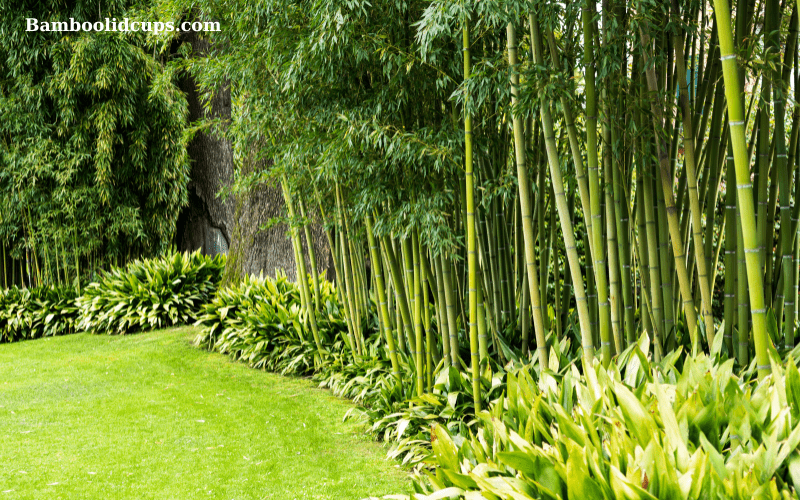
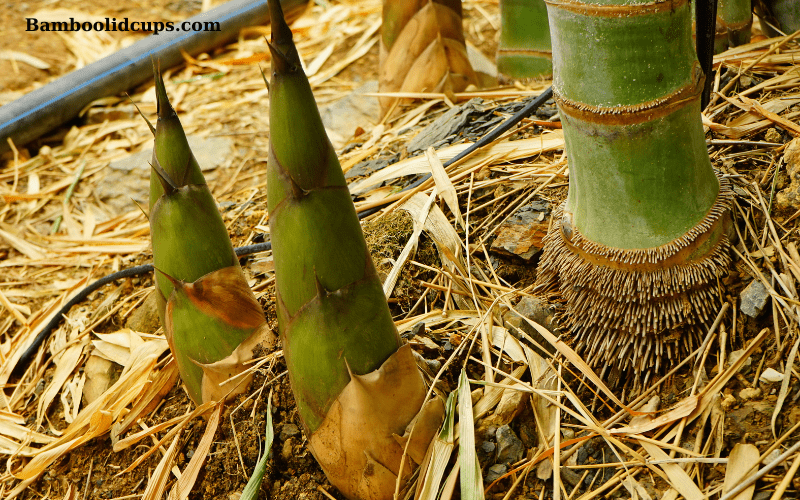
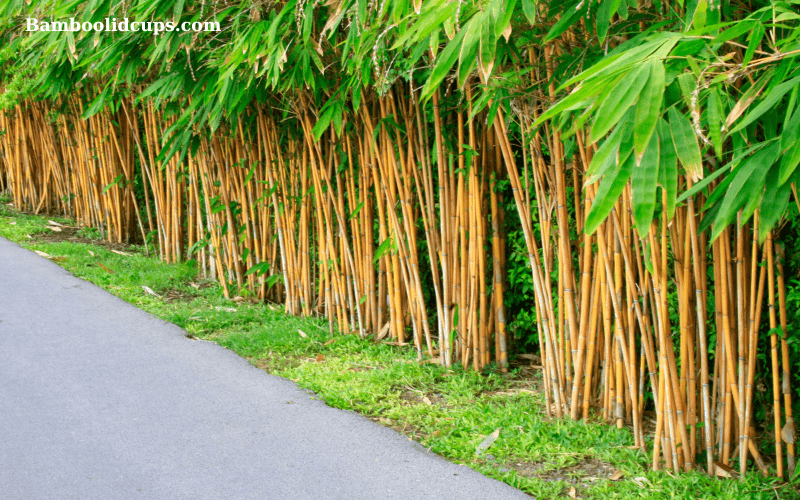
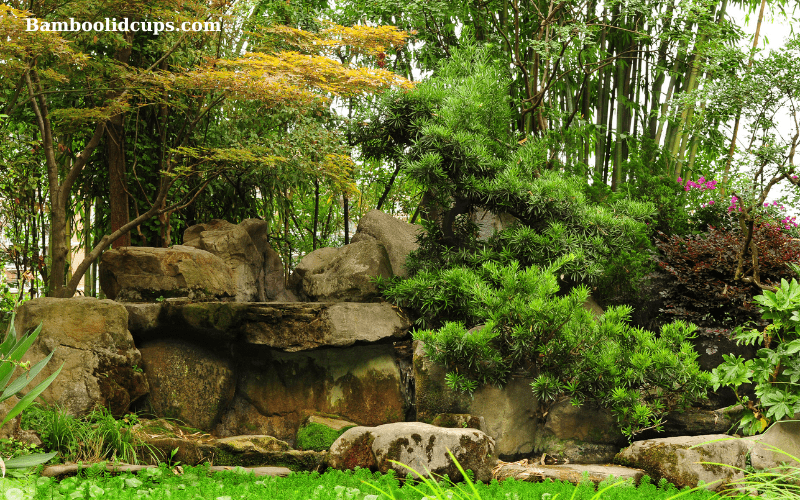
Design Concept Integrating Bamboo, Stone, and Water Elements
The design concept revolves around merging bamboo with stone and water features to create a serene Zen-like atmosphere. The combination of smooth stones and flowing water enhances the calming effect, providing a natural balance that soothes the senses. Bamboo pathways and fencing add to the visual appeal, offering both privacy and a unique aesthetic that blends seamlessly with the environment. To increase the diversity and vibrancy of the garden, various ornamental plants are incorporated, adding layers of greenery and texture. This thoughtful integration ensures the space is not only peaceful but also visually rich and inviting.
Feng Shui Benefits of a Bamboo Garden
A Bamboo Garden brings significant feng shui benefits, fostering harmony, balance, and positive energy within a space. Bamboo is considered a symbol of resilience, growth, and good fortune, making it ideal for creating an environment filled with vitality and tranquility. The tall, graceful stalks promote a sense of upward movement and personal growth, while the gentle rustling of bamboo leaves in the wind encourages calmness and reduces stress. When combined with natural elements like stone and water, the garden enhances the flow of *chi* (energy) and supports a peaceful atmosphere. This setup not only beautifies the space but also invites prosperity, good health, and a balanced lifestyle, aligning perfectly with the principles of feng shui.
Conclusion
In summary, a Bamboo Garden offers numerous benefits, positively impacting both the environment and the well-being of people. Its sustainable nature supports eco-friendliness, while its aesthetic and soothing qualities enhance mental health by providing a peaceful, natural retreat. The use of bamboo, along with complementary elements like stone and water, fosters a harmonious flow of energy, promoting tranquility and balance. Creating such a garden not only beautifies a space but also nurtures a connection with nature. Consider incorporating a Bamboo Garden into your living area to enrich your surroundings and cultivate a sanctuary of relaxation and rejuvenation.
What excites you most about having a bamboo garden? 🌱 Whether it’s the environmental benefits, aesthetic appeal, or versatility, we’d love to know your thoughts! Share your experiences or ideas in the comments below.
Discover more tips and inspiration about bamboo gardens on our website – let’s create a greener future together! 🌏
Ready to bring the beauty and serenity of a bamboo garden into your own space? Explore our recommended bamboo tools, products, and design tips to start creating your eco-friendly retreat today!
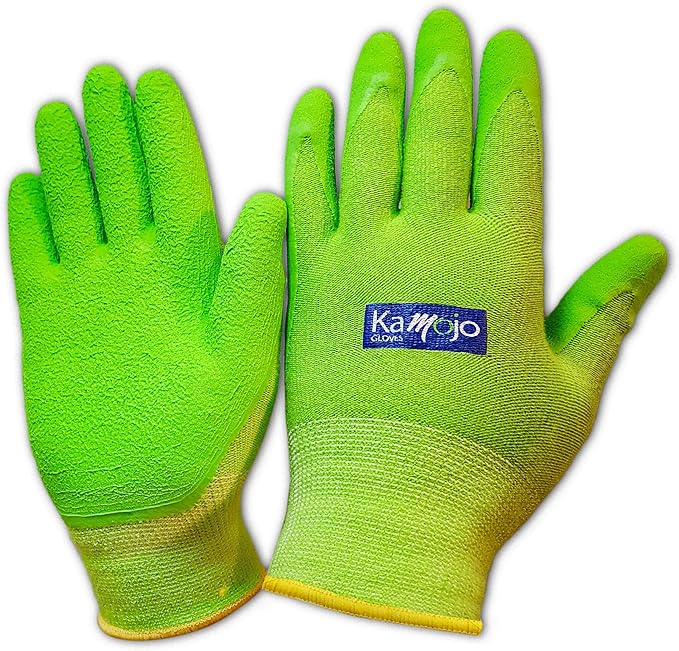
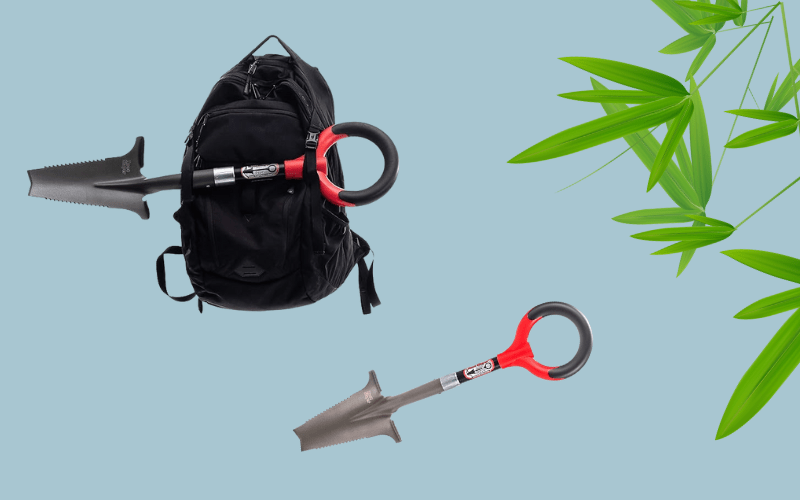
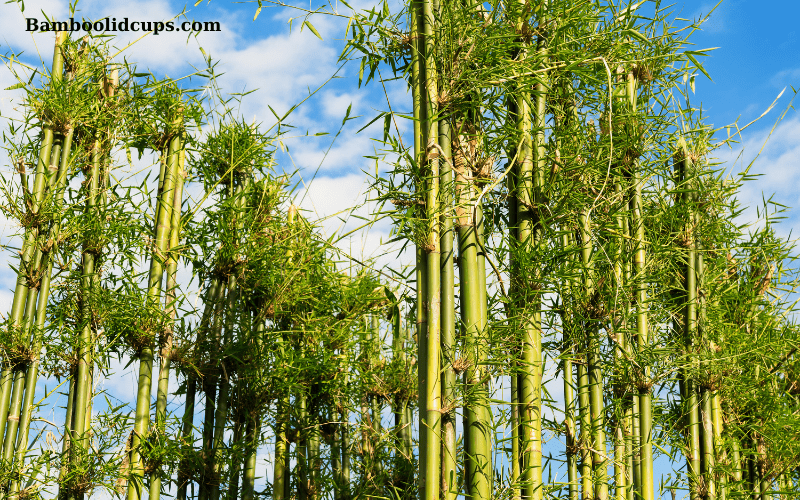
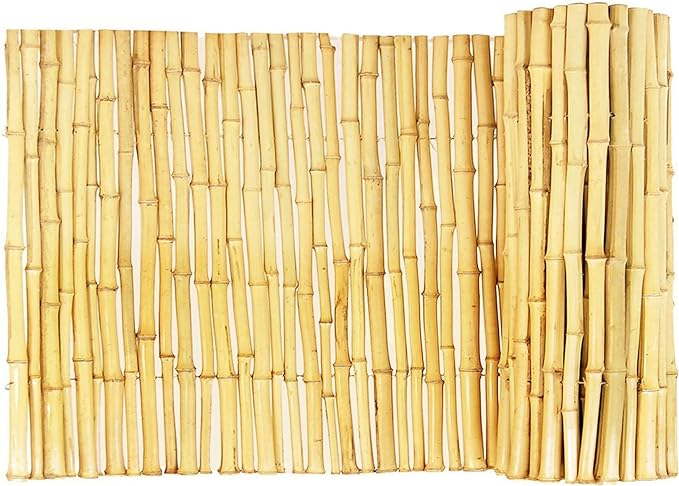
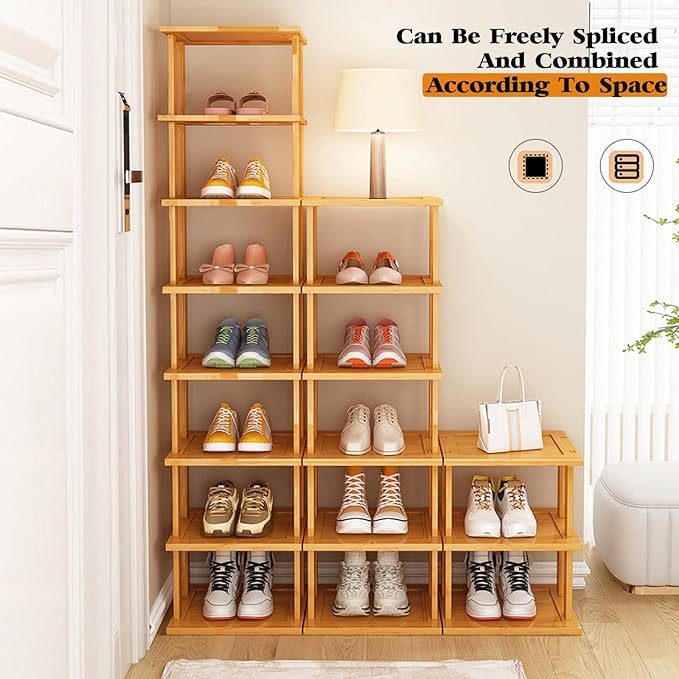
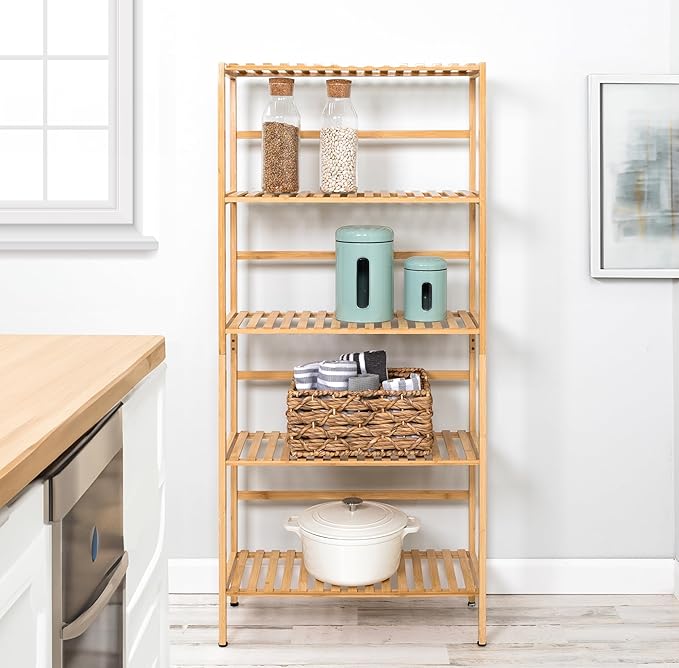
Related Search Terms: Bamboo Garden, Bamboo for Sustainable Living, Eco-Friendly Garden Ideas, Bamboo Plants for Home Gardens, Low-Maintenance Bamboo Gardens.
See More: